by Winter Rabbit | 12/23/2008 12:54:00 PM
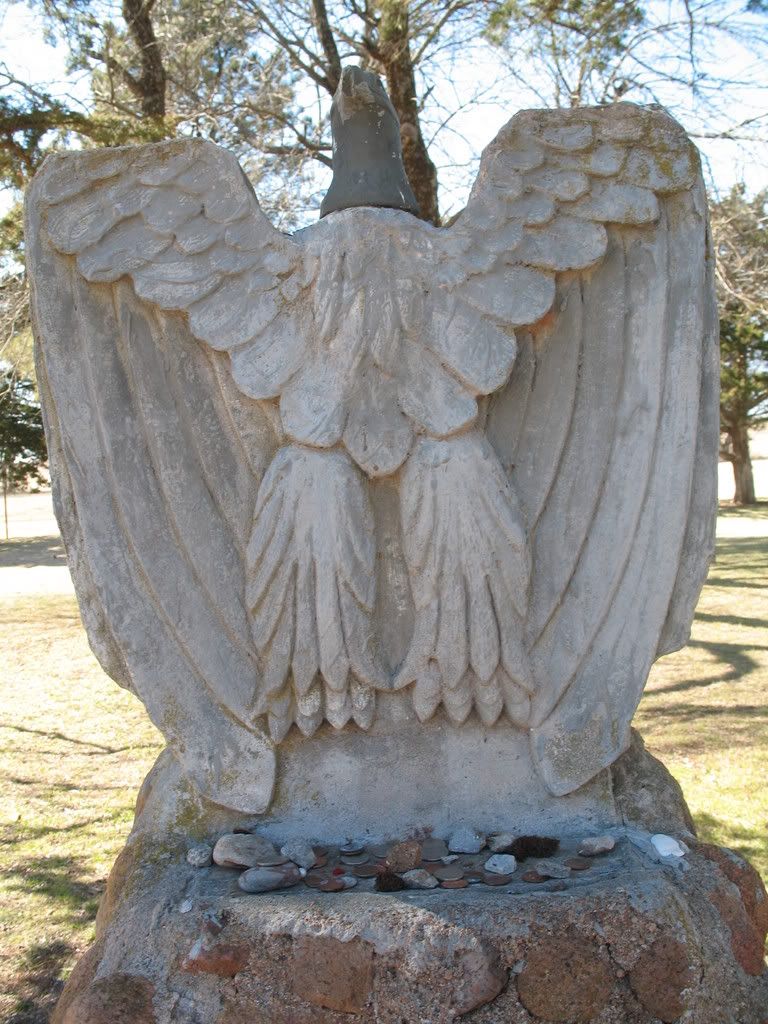
An elder told me that the Navaho took Geronimo's bones and gave them a proper burial before the U.S. Army only thought that he remained buried at Fort Sill after they buried him there. I told her I had been to the grave site. She asked me, "Did it feel like he was in there?" "No," I said. "They 'buried' him in the grave stone by stone, so he wouldn't ever come back," she said. I personally don't believe he is at Fort Sill, and I don't believe this either -
Whose Skull and Bones?
"The skull of the worthy Geronimo the Terrible, exhumed from its tomb at Fort Sill by your club & the K -- t [Knight] Haffner, is now safe inside the T -- [Tomb] together with his well worn femurs[,] bit & saddle horn."
Crossposted at Native American Netroots
Geronimo died in 1909, that letter was in 1918, and Geronimo's great-grandson wrote Bush about that letter.Curiously, that all makes me wonder - "Why didn't they want him to come back from his (alleged) grave?"
The question, "Why didn't they want him to come back from his (alleged) grave?" Must be seen symbolically and interwoven with some legends about him; but first, the question must be put into historical context.
The Alamo was on February 23, 1836; it was seven years after Geronimo's birth in 1829.
Remember The Alamo
The Alamo was remembered, as well as the Goliad
massacre (perpetrated by order of General Santa Anna), forty-six days later, on April 21, 1836 at the Battle of San Jacinto, where 783 men led by General Sam Houston
defeated 1,500 Mexicans.
The battle lasted only eighteen minutes.
When all was over, 630 men of the Mexican army were dead; 730 were prisoners.
Nine Texans lost their lives.
History then cloned itself once again over its entire course with a gold rush, bringing white encroachment by settlers and miners.
Apache Indians Defended Homelands in Southwest
The gold rush of 1849 also brought prospectors to the West and further encroachment on Indian land.
Copper and silver being discovered is what brought more white encroachment to Arizona, which is where Geronimo and the Apache were, but referring back to the question, the discovery of copper and silver is not what I think the army wanted to "keep from coming back" when they "buried" Geronimo stone by stone.
Source
As prospectors rushed west to join the California Gold Rush of 1849, gold, silver and copper were also discovered in Arizona, which attracted most of the early settlers. Those frontiersmen (pioneers of sorts) faced many obstacles, including the war parties of the great American Indian chiefs, Geronimo and Cochise.
The first glimpse of what I think they wanted to "bury" begins with a lesser known fact, interwoven with some legend. That is, the fact that Geronimo was a prophet and a medicine man; he was not a chief.
Source
Geronimo was never an elected chief, but he was a medicine man who could see the future, and who, it was believed, had a spirit that could not be harmed by bullets.
The following restated facts are crucial to understanding what set Geronimo on the war path, for it was not merely the white encroachment that set him on it, though it may have been so eventually by sheer speculation.
These are not the real reasons that Geronimo personally began to violently defend his people and homeland in my opinion: the white encroachment after the Alamo, the gold rush of 1849 that was fueling white encroachment in California, while the discovery of copper and silver was fueling white encroachment in Arizona. The encroachment was not enough in and of itself, but genocide was.
Source
When Columbus landed in America in 1492, he mistook it for India and called the native inhabitants "Indians." It was his avowed aim to "convert the heathen Indians to our Holy Faith" that warranted the enslaving and exporting of thousands of Native Americans. That such treatment resulted in complete genocide did not matter as much as that these natives had been given the opportunity of everlasting life through their exposure to Christianity. The same sort of thinking also gave Westerners license to rape women.
-- The Dark Side of Christian History, by Helen Ellerbe
It was Roman Catholic Church from Spain, who had been guilty of genocide against the indigenous people for centuries prior that committed the atrocity against Geronimo's family, and put revenge in his heart.
The Spanish were in search of Christian converts and slaves. The Spanish exterminated Geronimo's family.
The Jesuit Missions that took place in New France in 1625 puts the Spanish's seeking slaves and converts to Roman Catholicism in historical context.
A People & A Nation. 4th Edition. p.38
The Jesuits, whom the Native Americans called the Black Robes, initially tried to persuade the tribal peoples to live near French settlements and to adopt European lifestyles as well as the European's religion. When that effort failed, the Jesuits concluded that they could introduce Roman Catholicism to their new charges without insisting that they alter most of their customary modes of existence. So the Black Robes learned Native American languages and traveled to remote regions in pursuit of their goal. By the early eighteenth century, they were living in present-day Illinois.
In the pursuit of their conversions, the Jesuits sought to undermine the authority of the villiage shamans (the traditional religious leaders) and to gain the confidence of leaders who could influence others. The Black Robes used a variety of weapons to attain the desired end. Trained in rhetoric, they won admirers by their eloquence. Seemingly immune to smallpox, they explained epidemics among the Native Americans as God's punishment for sin, their arguments aided by the ineffectiveness of the shaman's traditional remedies for illness against that deadly disease. Drawing on European science, the Jesuits predicted solar and lunar eclipses. Perhaps most important of all, they amazed the villagers by communicating with each other over long distances and periods of time by employing marks on paper. The Native Americans' desire to learn how to harness the extraordinary power of literacy was one of the most critical factors in making them receptive to the Jesuits' message.
To illustrate, here are just three examples of where the Spanish Roman Catholic Church had been guilty of genocide against the indigenous people about one century earlier than the above mentioned.
Things They Don't Tell You
"The [Catholic] Spaniards in Mexico and Peru used to baptize Indian infants and then immediately dash their brains out; by this means they secured that these infants went to heaven."
-- Bertrand Russell
Kurt Kaltreider, PH.D. American Indian Prophecies. p.54
According to Father Las Casas, the Spaniards "tore babies from their mother's breast by their feet, and dashed their heads against the rocks -"
Finally, a report from some concerned Dominican friars contains the following: "Some Christians encountered an Indian woman, who was carrying in her arms a child at suck; and since the dog they had with them was hungry they tore the child from the mother's arms and flung it still living to the dog, who proceeded to devour it before the mother's eyes."
In addition, it is crucial to remember that there were Indian Boarding Schools, whose aim was to culturally assimilate and destroy indigenous cultures.
Photo: Little girls praying beside their beds, Phoenix Indian School, Arizona. (NWDNS-75-EX-2B)
Hence, not only was Geronimo and the Apache fighting white encroachment and genocide, they also were fighting against being Christianized from both the white people and the Spanish Roman Catholic Church, which resulted in even more loss of their culture through assimilation and death. It was also in that context that Spanish exterminated Geronimo's children, wife, and mother.
Source
- when all were counted, I found that my aged mother, my young wife, and my three small children were among the slain.
Were the facts that Geronimo had adequate causes to defend his people, an adequate cause to feel vengeful, and that he was a medicine man large enough reasons for the army at Fort Sill to bury him such that he'd never "return?" Hardy, from the U.S. military's point of view at that time, I think. For me, the answer lies in one man: General George Crook, who had fought the Lakota in the Sioux Wars.
Source
"Crook never lied to us. His words gave the people hope."
-- Lakota Chief Red Cloud
Wars and Battles Sioux Wars
A one-year conflict dubbed Red Cloud's War (1866-1867), concluded with a treaty that guaranteed the Sioux permanent possession of the Black Hills of present-day South Dakota. The covenant, however, was not observed by the United States. Prospectors and miners itching for gold inundated the territory in the 1870s.
In the ensuing hostilities, Brigadier General George Crook commanded the Sioux to move onto a reservation. Sitting Bull and Crazy Horse refused to comply and move their people. Infuriated by unjust assaults, Sitting Bull gave notice: "We are an island of Indians in a lake of whites... These soldiers want war. All right, we'll give it to them!"
On June 17, 1876, a war party of Sioux and Cheyenne took Crook's soldiers by surprise in southern Montana and routed them in the Battle of the Rosebud. General George A. Custer then led a force against the Indians. On June 25, he and his men ran into a Sioux war party on the Little Bighorn River. Not a single soldier in Custer's immediate command of some 300 men survived "Custer's Last Stand."
Crook experienced a metamorphous during the Sioux Wars and the trial of Standing Bear; he started looking at the indigenous people from his heart and began divorcing himself from the dehumanization of "The only good Indian is a dead Indian."
Dee Brown. Bury My heart At Wounded Knee.p. 402
To bring order out of chaos, the army called on General George Crook- quite a different man from the one who had left Arizona ten years earlier to go north to fight the Sioux and Cheyennes. He had learned from them and from the Poncas during the trial of Standing Bear that Indians were human beings, a viewpoint that most of his fellow officers had not yet accepted.
The Trial of Standing Bear
After the attorneys presented their arguments, Judge Dundy allowed Standing Bear to address the court. Standing Bear did not speak English, but he was able to make an eloquent plea to the court through his interpreter, Susette ("Bright Eyes") LaFlesche.
Standing Bear rose, extended his hand toward the judge's bench --
"That hand is not the color of yours, but if I pierce it, I shall feel pain. If you pierce your hand, you also feel pain. The blood that will flow from mine will be the same color as yours. I am a man. God made us both."
The fact that a U.S. military general could change from seeing Indians as "savages" is what I believe the army never wanted to come back from Geronimo's grave, for Crook's transformation supplied him with the motivation to speak out against the propaganda of the press.
Source
"It is too often the case that . . . newspapers . . . disseminate all sorts of exaggerations and falsehoods about the Indians, which are copied in papers of high character and wide circulation, in other parts of the country, while the Indians' side of the case is rarely ever heard. In this way the people at large get false ideas with reference to the matter. Then when the outbreak does come public attention is turned to the Indians, their crimes and atrocities are alone condemned, while the persons who injustice has driven them to this course escape scot-free and are the loudest in their denunciations."
Geronimo:
The soldiers never explained to the government when an Indian was wronged, but reported the misdeeds of the Indians.
In addition, his transformation supplied him with the motivation to practice patience and diplomacy with Geronimo, Crook was called "Grey Wolf." Tragically, Grey Wolf could not keep the promise he made to Geronimo regarding their returning to their reservation after their surrendering and agreeing to being imprisoned in Florida, so that they could return to their reservation.
Geronimo 1829-1909
The Apache warriors were deported to incarceration in Florida without their families - an agreement broken - then Alabama and finally to Fort Sill, Oklahoma Territory.
The War Department, quite frankly - said no.
When they brought Geronimo to Fort Sill, here's the general location the put him in.
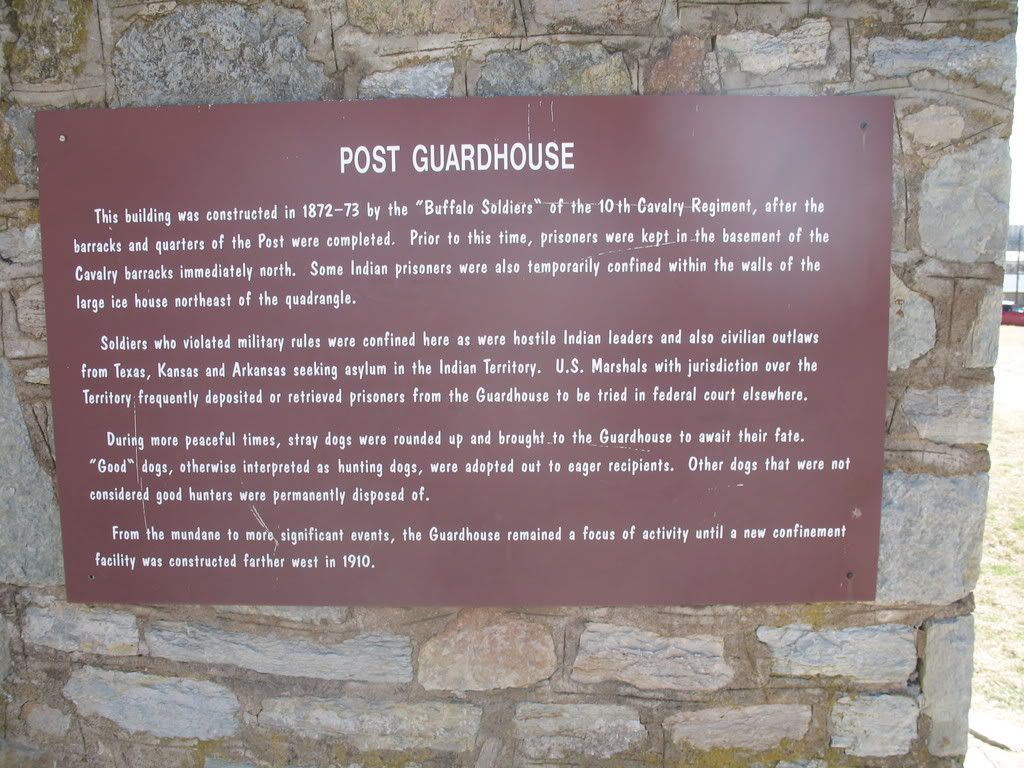
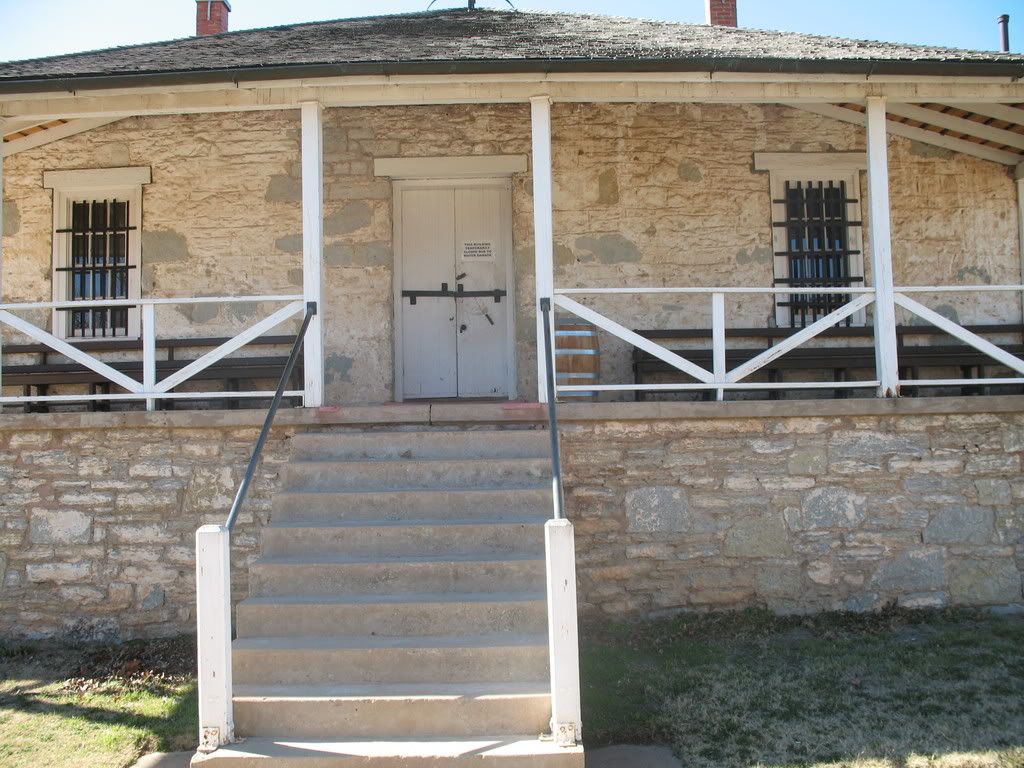
Specifically, this was the window he had to look out of.

I'm sure that all the stories about how popular he was meant a great deal to him, as did him having some freedom at Fort Sill.
After he died of pneumonia,they buried him here:
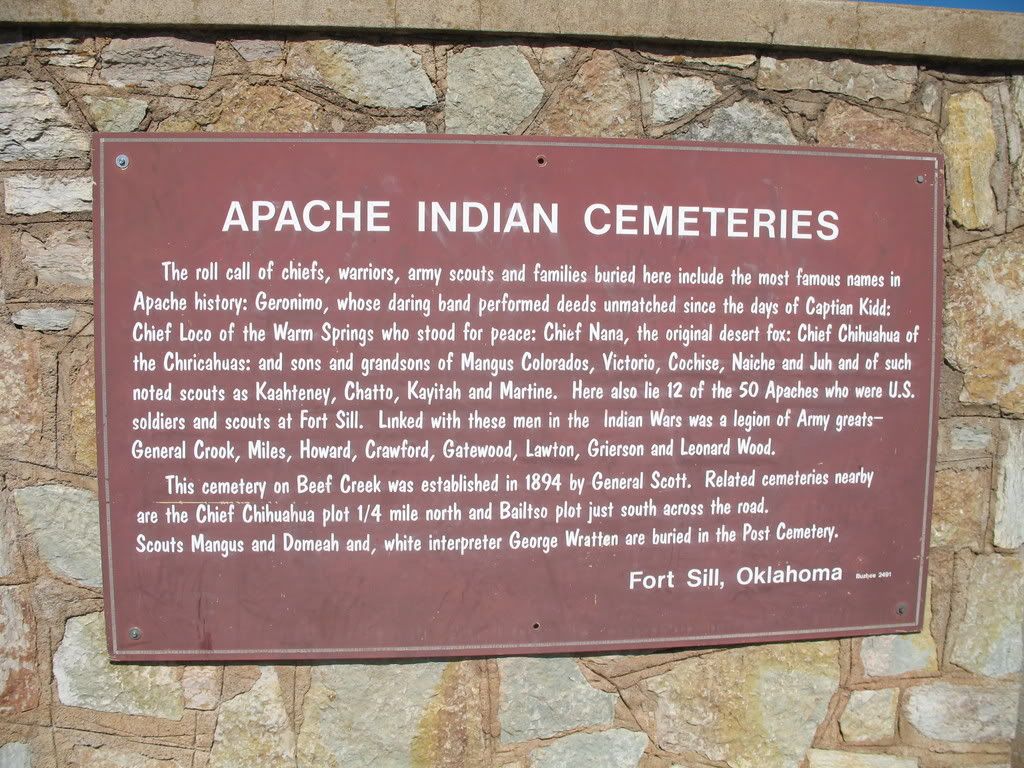
To bring this to a close, "an elder told me that the Navaho took Geronimo's bones and gave them proper burial before the U.S. Army only thought that he remained buried at Fort Sill after they buried him there," as I stated in the beginning. A look around the cemetery reveals the possibility of that being true, due to the remoteness and seclusion of the area. Note that there was probally more tree cover nearly a century ago.
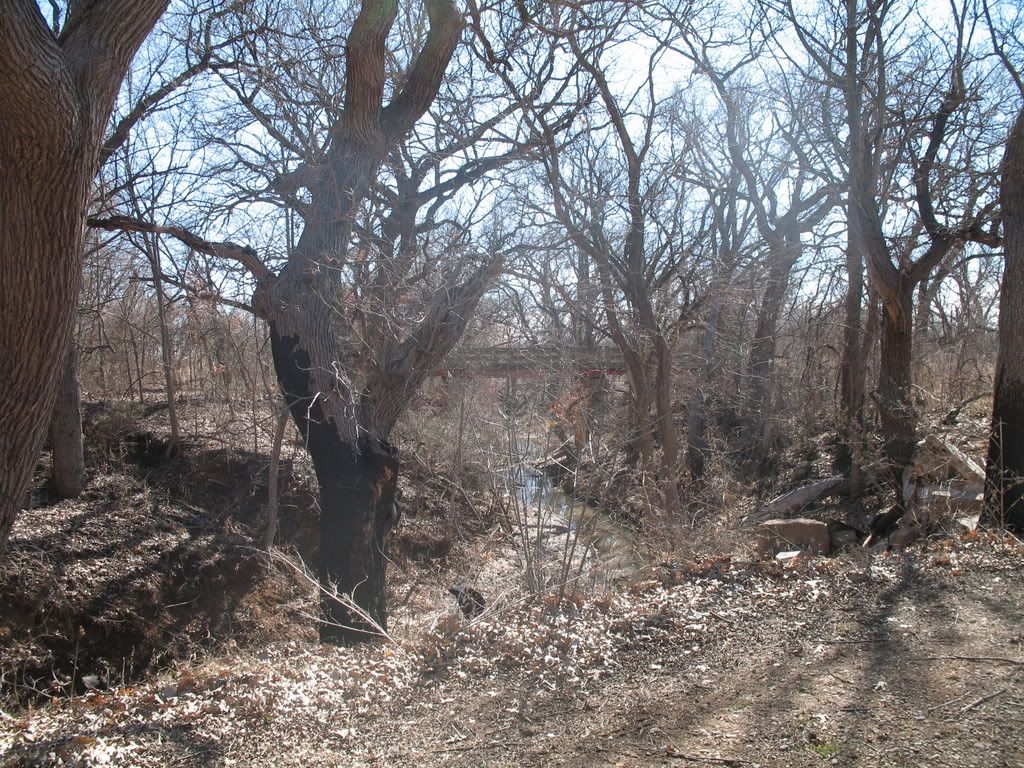
Dee Brown. Bury My heart At Wounded Knee.p. 413
A legend still persists that not long afterward (his death) his bones were secretly removed and taken somewhere to the Southwest-
The spirit of Goyathlay ("one who yawns"), or Geronimo is quite simply this in my judgment: that people can and do change in extreme circumstances, and when they change for the better and/or for noble reasons in the midst of atrocities beyond their control... that is the spirit of Goyathlay.
Geronimo:
I was born on the prairies where the wind blew free and there was nothing to break the light of the sun. I was born where there were no enclosures.
Labels: winter rabbit




